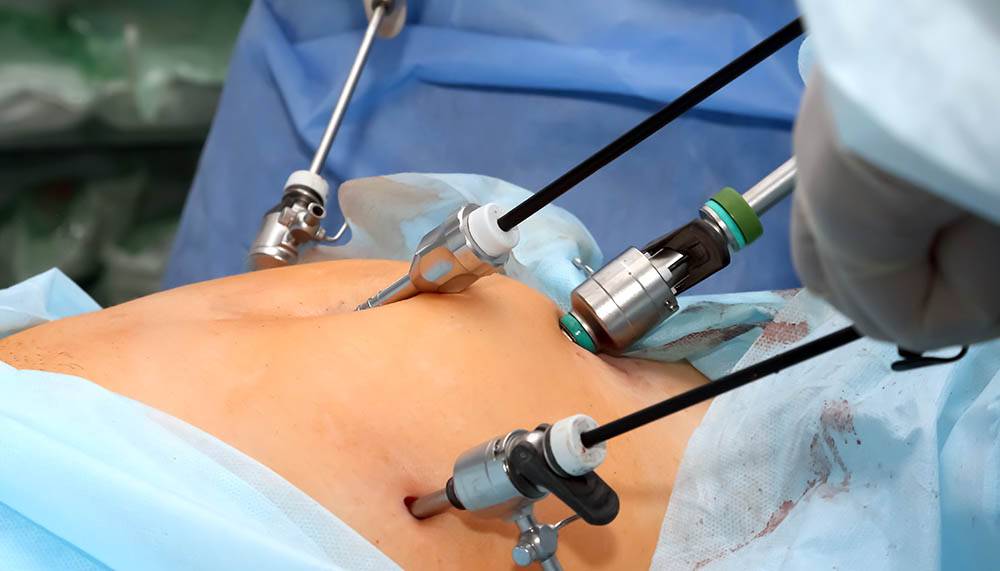What Are Uterine Fibroids?
Why Choose Laparoscopic Surgery?
The Laparoscopic Procedure Explained
Benefits of Laparoscopic Fibroid Removal
Smaller Surgical Cuts
Conventional surgery requires large incisions in the chest and long cuts through several muscular layers and tissue. Laparoscopic techniques use cuts like keyholes, typically 0.5-1 cm long, producing a greater reduction in trauma. The microscopic entry points cause minimal damage to the productive normal tissue surrounding it and preserve muscle integrity, thus speeding up healing for patients.
Reduced Postoperative Pain
Smaller incisions equate to much lesser pain after surgery, as there is no extensive disruption of tissues surrounding the incision during the process. Patients experience almost no internal inflammation or trauma. It has been proved that very few nerve endings are disturbed by this method of surgery, thus cutting down the existing pain signals. During recovery, patients require less pain medication and report a more comfortable experience.
Shorter Hospital Stay
Minimally invasive methods have drastically shortened hospitalisation time. Where traditional surgery often mandates a 3- to 5-day hospitalisation, many laparoscopic surgeries enable same-day or next-day discharge. The recovery process is even faster and involves fewer complications for the patient, who is also able to return to his home environment much more quickly. This will be important to psychological and physical healing.
Faster Return to Normal Activities
Laparoscopic surgery dramatically accelerates recovery timelines. While traditional fibroid removal might sideline patients for 4-6 weeks, minimally invasive techniques can reduce recovery to 1-2 weeks. Patients can typically resume light activities within days, with full recovery happening much faster than conventional surgical methods.
Minimal Scarring
The tiny incisions used in laparoscopic surgery create nearly invisible scars. Surgeons make cuts so small that they often heal with minimal visual evidence. These microscopic entry points mean patients avoid large, prominent surgical scars. Cosmetic outcomes are significantly improved, boosting patient confidence and psychological well-being.
Lower Risk of Infection
Smaller surgical sites dramatically reduce infection risks. Fewer and smaller incisions mean less exposure to potential contaminants. The precision of laparoscopic techniques minimises open wound areas, reducing bacterial entry points. Patients experience lower chances of postoperative infections, creating a safer surgical experience with enhanced recovery potential.
Who Are Good Candidates?
Lengthy Menstrual Cycle
Women with exceptionally lengthy menstrual cycles or heavy bleeding can be good candidates. Bleeding lasts longer than seven days and is pretty heavy due to fibroids. These cycles affect a lifestyle and cause physical and emotional distress. By laparoscopic removal, menstrual pattern is restored through a targeted approach.
Severe Pelvic Pain
Fibroid growth-induced pelvic pain can significantly affect the quality of life. A patient experiences sharp stabbing pain throughout her period or during the act of intercourse, which may necessitate laparoscopic management. This surgical therapy will give direct access to the removal of the fibroids, thus addressing the source of the pain and giving considerable relief to these patients.
Fertility Impairment
Fibroids can act as impediments to fertility because of cause distortions in the uterine cavity or block the fallopian tubes. Thus, for women with repeated miscarriages or having difficulty conceiving, laparoscopic myomectomy can be a miracle. The targeted surgical technique assures an almost restoration of the functionality of the reproductive tract, thereby enhancing the chances of conception.
Bladder Pressure
A large fibroid might press on the bladder, resulting in frequent urination that is often uncomfortable. Patients with constant urgency to urinate, reduced capacity of the bladder, or incomplete emptying might benefit greatly from laparoscopic removal. The surgery takes away the physical pressure, restores normal function of the bladder, and removes the associated discomfort.
Frequent Urination
Uterine fibroids can cause compression of tissues close to the bladder, according to the case scenario, causing a woman to urinate repeatedly, rouse up at night, and keep her from going out as often because of constant pressure on the bladder. Laparoscopic surgery tends to be more targeted to remove the fibroids and improve normal urinary tract function.
An evaluator from the gynaecology surgery department will definitely determine if laparoscopic surgery is the most suitable choice for your condition after thorough tests.
Recovery and Expectations
Usually, patients return home on the same day of the surgery. Recovery is mostly about one to two weeks after, and during this time, one normally gets back to normal activities gradually. Your surgeon will give more advice depending on your personal health profile.
Ready to explore your fibroid treatment options? Contact Kewal Hospital for a customised consultation by giving the first step towards comprehensive women's healthcare.




